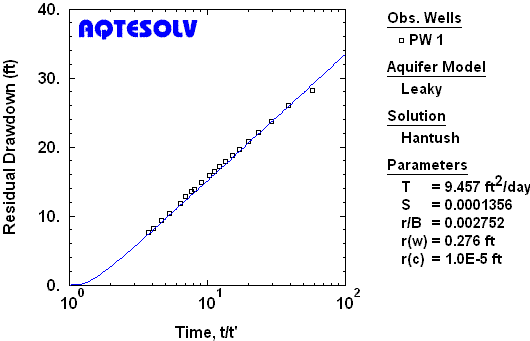Constant-Head Test Analysis
"I chose AQTESOLV for its ease of use."
--David Preston, P.E., Peachtree Environmental
AQTESOLV includes an advanced set of solution methods for the interpretation of data from constant-head tests in confined, leaky confined and fractured aquifers. Constant-head tests are alternately known as constant-drawdown tests.
- analyze discharge from constant-head test
- analyze recovery data with exact solution for change in boundary condition
Summary of Constant-Head Test Solutions
| Summary of Constant-Head Test Solutions in AQTESOLV Pro | |
| Solution Category | Methods Available |
| Constant-Head Tests |
11 |
| Recovery Tests |
10 |
| Wellbore Skin |
6 |
| Confined Aquifers |
5 |
| Leaky Aquifers |
2 |
| Fractured Aquifers |
4 |
Compare constant-head test solutions in the Pro and Standard versions.
Constant-Head (Constant-Drawdown) Analysis
AQTESOLV features solution methods for the analysis of constant-head tests. During a constant-head test, the water level in the test well is held constant while discharge declines through time. If the water level is lowered from static during the test, the term constant-drawdown test is applicable.

Recovery Analysis
Interpretation of recovery data obtained after a constant-head test requires special analytical techniques because of the change in boundary condition from constant head to constant rate (during recovery, the discharge is zero and the water level in the test well returns to static).

AQTESOLV features an exact method for analyzing these recovery tests. You may use residual drawdown plots (Figure 2) or the Agarwal method to analyze recovery data from a constant-head test.
See also: constant-head tests